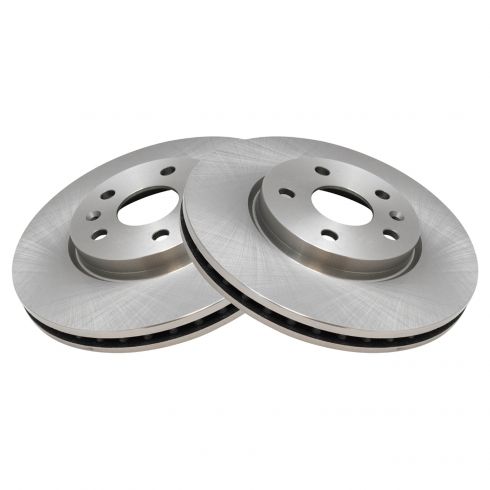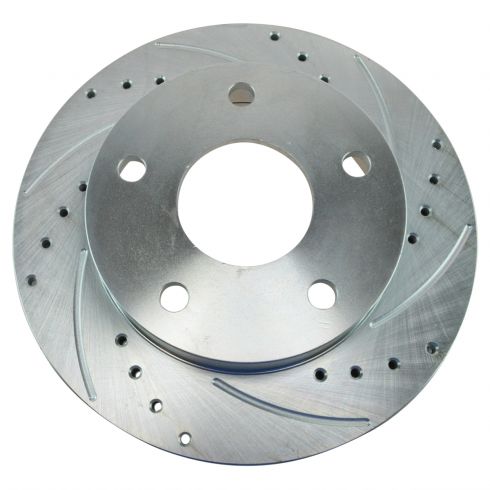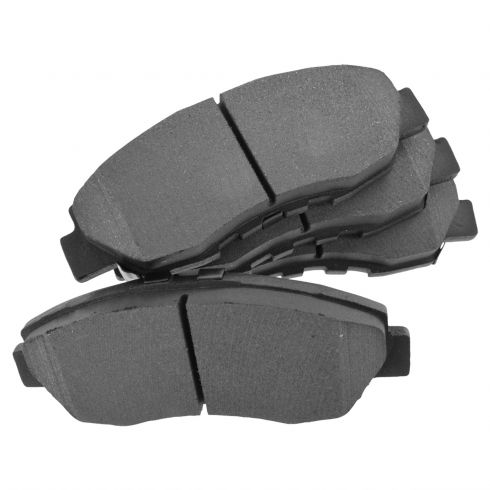Different Types of Disc Brakes
Different Types of Disc Brake Pads and How They Work
If you're looking for new brakes for your car, truck, or SUV, you've probably noticed the many different types of brakes available. Or maybe you're just wondering what kind of brakes you have on your vehicle. Disc brakes and drum brakes are the two common types of service brakes on vehicles today. Since disc brakes—brakes consisting of pads and rotors—are more common, we'll describe their types and differences, and their advantages and disadvantages.
Changing your pads or rotors are the two major ways to change the performance and the feel of your brakes. First, let's review how brakes work: Your brake discs or rotors are attached to your wheel hubs, and they spin together with the wheels. When you step on the brake pedal, the brake master cylinder sends hydraulic fluid to the brake caliper, which pushes the pads into the rotors. Brake pads have the friction surface that slows the rotors. The friction of the pads creates heat against the rotors and slows down the spinning wheels, which in turn slows the car down. That friction surface can be made of different materials, and the three main types are organic, ceramic, and semi-metallic brake pads.
Different Kinds of Disc Brake Pad Materials
Organic Brake Pads
Originally, brake pads were made of asbestos. As consumers and manufacturers learned more about the health risks associated with asbestos exposure, asbestos brake pads were phased out. Non-asbestos organic brake pads emerged to take their place. These are usually just referred to as organic brake pads.
Organic brake pads are made of materials like glass, rubber, and Kevlar. They are softer than other brake pads, which makes them quieter. They also wear more quickly and create more dust as they wear down. Because these pads are softer, they don't offer as much stopping power. Organic pads are best suited for light cars that don't see heavy use.
Semi-Metallic Brake Pads
Semi-metallic pads, sometimes simply called metallic pads, are a lot sturdier. They are made of metal, such as iron shavings or bits of steel wire held together with graphite. Metal usually makes up about 30 to 65 percent of the brake pad, hence the term semi-metallic. Because metallic brake rotors are hard, they provide good stopping power, but they put more wear on brake rotors. The hard pads also make more noise than organic pads.
Metallic brake pads need to warm up before they can work their best. In especially cold weather, they may not provide optimal braking until later in your drive. Metallic pads provide good stopping power at a reasonable price, and are a good option for normal driving conditions.
Ceramic Brake Pads
Ceramic brake pads are even more durable. They are made of ceramic materials, sometimes with a small amount of copper. The ceramics dissipate heat well, which keeps them from wearing. That can mean that the rotors take on more heat though, which can lead to rotor warping. Ceramic pads are also more expensive. Ceramic pads are also lighter, which, paired with their heat resistance, makes them well suited to motorsport or aggressive driving. They also produce the least brake dust of any type of brake pads, and less noise than semi-metallic pads.

Different Types of Brake Rotors
In addition to brake pads, there is also a number of brake rotor variants. Brake rotors may be vented, drilled, slotted, or some combination of the three. These enhancements all have different effects.

|
| Vented rotors |
Vented Rotors
Vented rotors have channels that run through the diameter of the rotor. The vents allow air to flow through the rotor cooling it down. Brake grip tends to "fade" with heat, so vented rotors help you maintain strong braking better under stress. They also reduce don't experience as much wear from heat. Vented rotors are well suited to motorsport and to towing, where demands on the brakes can be high.

|
| Cross-drilled and slotted rotor |
Drilled Rotors
Drilled rotors have holes drilled through the cross section of the rotor. For that reason, they are sometimes called cross-drilled rotors. As the pads scrape along the rotors, gasses and brake dust can build up between the pads and rotors. That reduces the friction and reduces the grip of your brakes. The holes in drilled rotors allow the dust and gas a means to escape, which lets the pads keep a better grip on the rotors. The holes also keep water from getting between the pads and rotors, which can help keep your brakes gripping in wet conditions. Air passes through the holes which can also cool the brakes.
If brake pads overheat, the friction material can crystallize. This is called brake glazing. Glazed brakes have a smooth surface which can cause a loss of friction and poor braking. The uneven surface of drilled rotors can essentially scrape off the glazed material, keeping a good friction surface. This scraping effect means that you will wear down your pads more quickly.
Another downside to drilled rotors is that the holes make the surface weaker than a solid rotor. Drilled rotors can develop cracks.
Slotted Rotors
To prevent the cracking problems of drilled rotors, slotted and dimpled rotors were developed. Dimpled rotors have indents drilled into the rotor surface, but not all the way through the rotor, like in drilled rotors. Slotted rotors have indents in the rotor surface, which, again, don't go through the rotor. The slot or dimples allow gasses and dust to escape from between the pads and rotors just like drilled rotors, but they are sturdier. They also provide the same anti-glazing benefits. Slotted rotors also tend to be more expensive than drilled rotors (which, in turn, are more expensive than solid rotors).
Some rotors have both cross-drilled holes and slots. This offers a compromise between the advantages and disadvantages of drilled rotors and slotted rotors. The holes provide ventilation, but with fewer holes, there's less risk of cracking.
What Kind of Brake Pads Are Best for My Vehicle?
The decision of what types of brake to use will depend on your vehicle and the intended uses of your brakes. Each type of pad and each type of rotor provides its own benefits and drawbacks. Now that you know what purposes each type of brake part serves, you can choose the right brakes for your vehicle.
To replace the brakes yourself, check out our video library for videos on different years, makes, and models.

